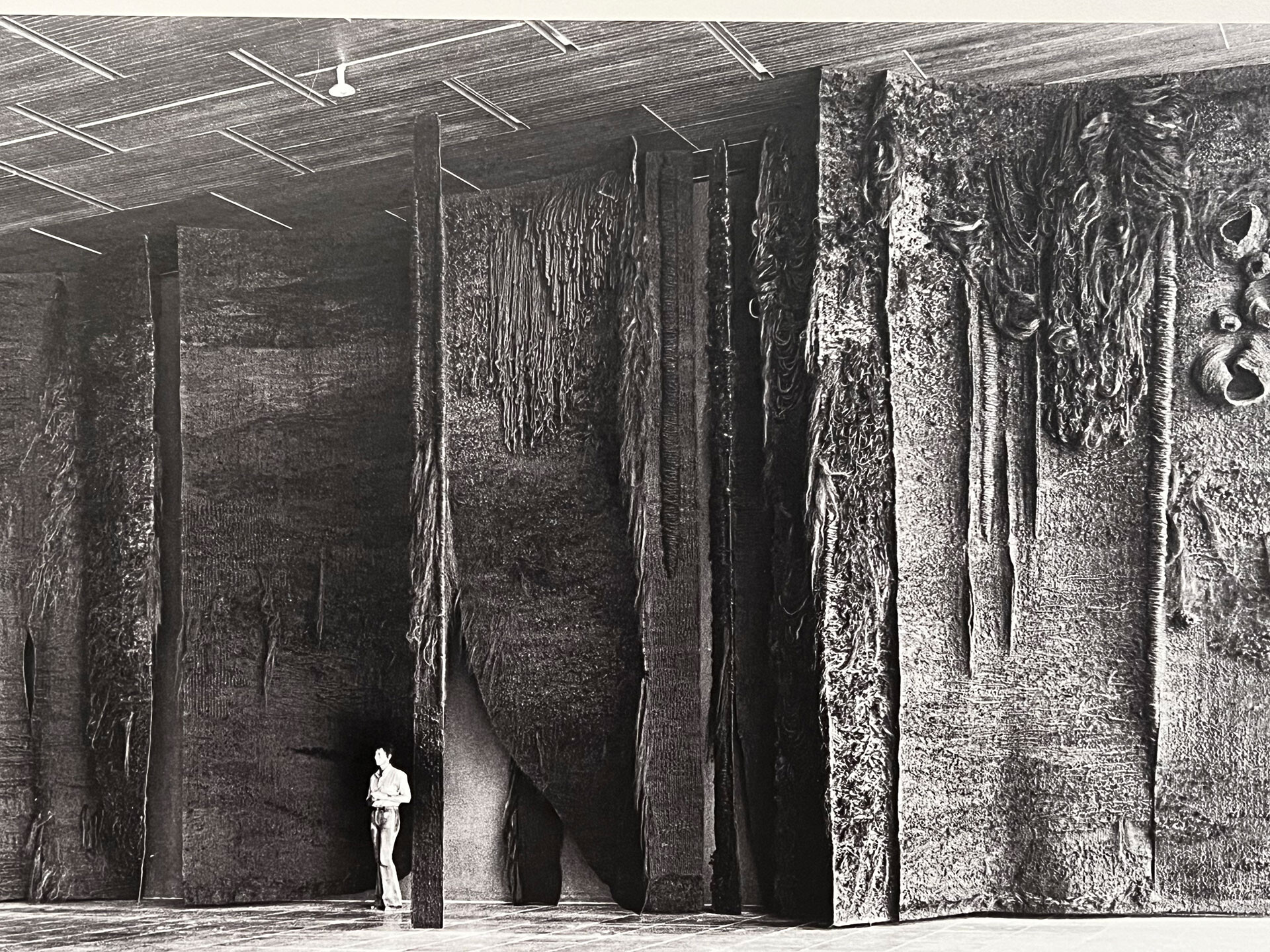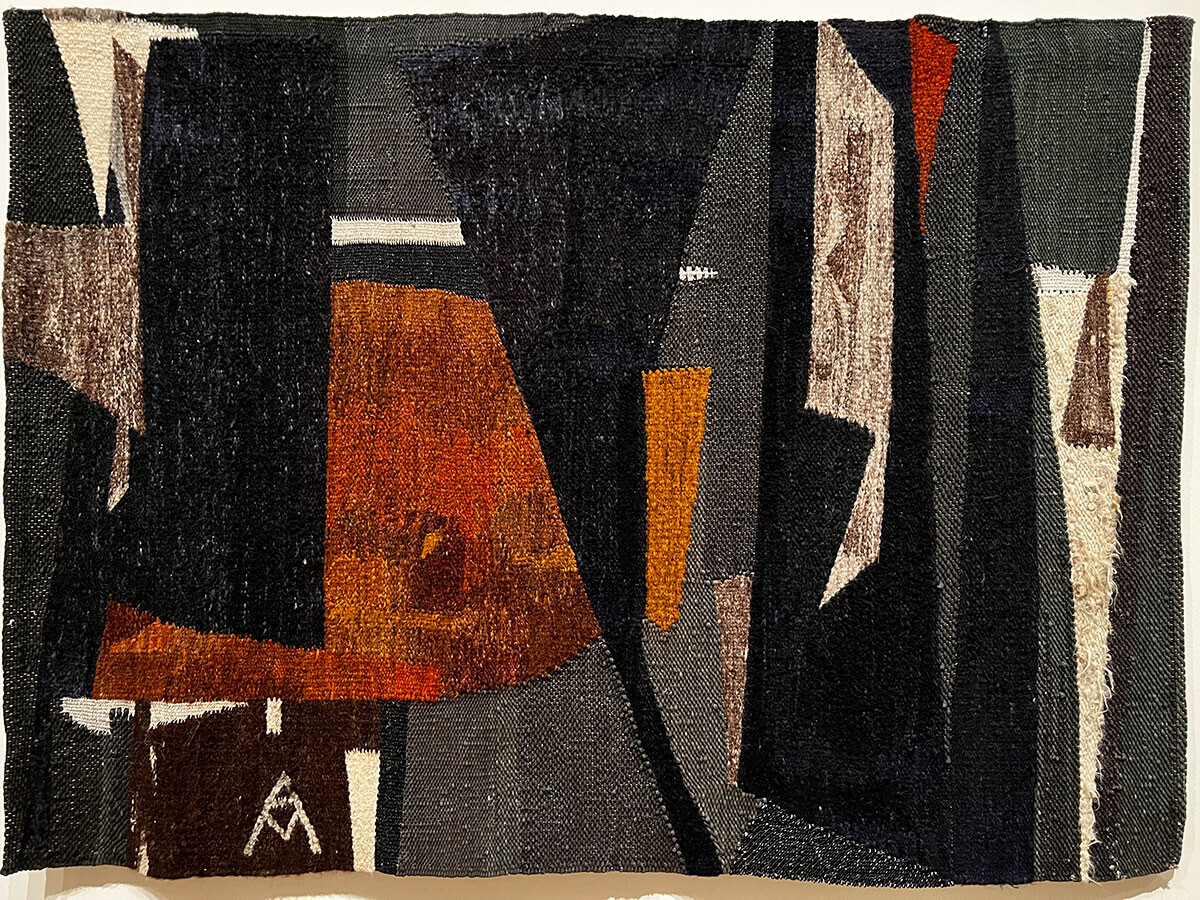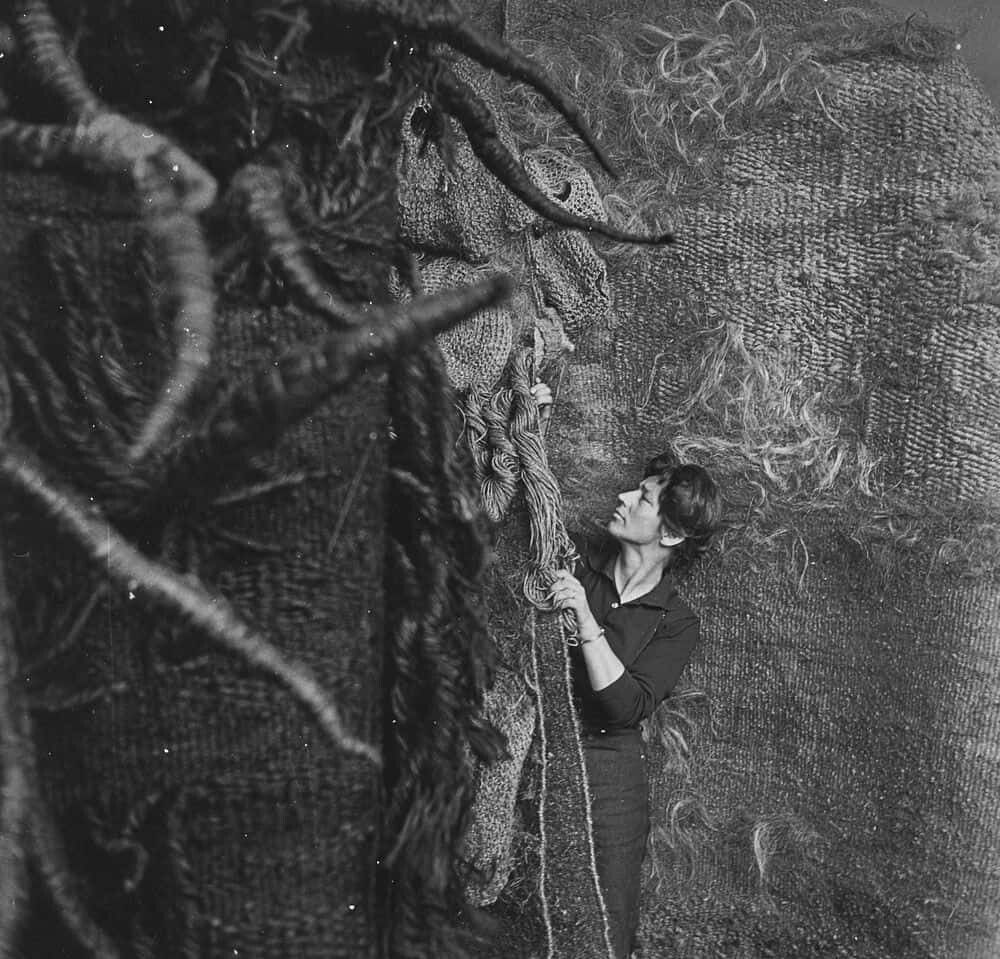Magdalena Abakanowicz at Tate Modern

There are few artists whose career includes a distinct body of work so significant in scale and ambition; so radical in effect; and so rich in meaning that it provides fertile ground for the presentation of a large scale and focused exhibition enabling new perspectives on both their work and its place within broader histories of art. Fifty years after their creation, this exhibition at Tate Modern brings together Abakanowicz's Abakans and her earlier works.


Deriving their name from the artist's own family name, the Abakans astounded and confused critics when they were first presented in the late 1960's. What exactly are these curious woven forms that seem to defy categorisation as either sculpture or tapestry; as art or craft ?
Abakans, which were the result of an intensive creative process, are three dimensional sculptures of complicated and convoluted shapes, with intriguing surfaces and texture. Often, one could enter them, penetrate their insides, step into them like into an empty tree trunk, which can give us shelter. In her notes, Magdalena Abakanowicz wrote that when she finally could set up her own workshop, equipped with a lift for hanging Abakans, she was already around 40 years old.


The multidimensional tapestries of the artist were presented on the International Biennale in São Paulo in 1965. They were a real revelation, a sensation, but also provoked a certain amount of dismay caused by their surprising visual effect. The prize which Magdalena Abakanowicz won at this biennale opened the way to international exhibitions, and made her a world-famous artist. She said of her success: Abakans brought me global fame, but they were also a burden, like a sin you cannot admit to. Because weaving closes the doors to the world of art
https://www.tate.org.uk/whats-on/tate-modern/magdalena-abakanowicz